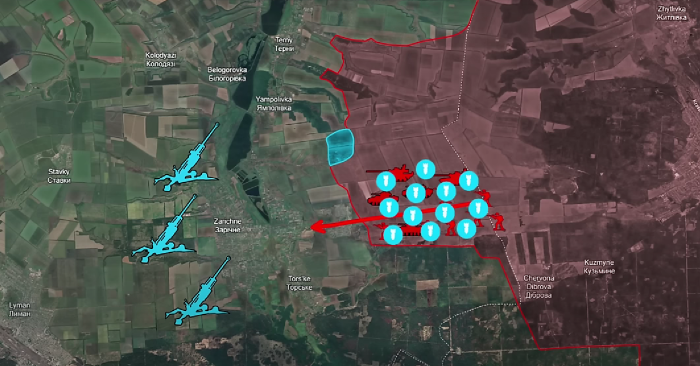Day 818: 21 May
On 21 May, there are a lot of updates from the Lyman direction. Here, Russian forces attempted to eliminate the Ukrainian bridgehead east of the Zherebets River. Meanwhile, Ukrainians are fiercely countering these assaults with relentless drone strikes and powerful artillery barrages and even started gaining more ground.
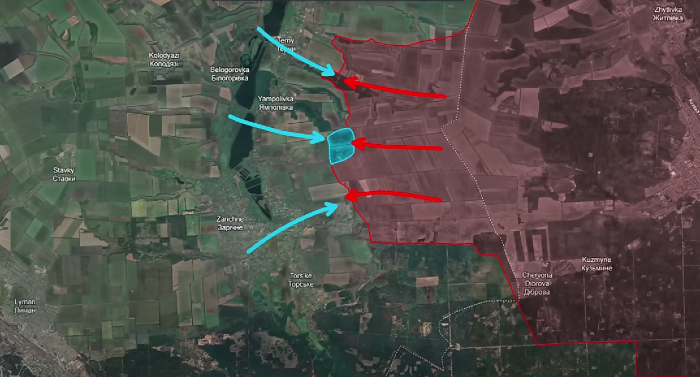
As stated in the previous report, Russian forces had exhausted their combat capabilities during their costly attempts to cross the river and attack Lyman, forcing Russians to enter a period of reorganization. This allowed Ukrainians to counterattack and retake numerous positions in the tree lines.
As Russians were still disorganized, they could not mount a counterattack and were forced to accept the Ukrainian tactical gains.
During the period of reorganization, Russian commanders realized that it was futile to simply continue their previous suicidal attacks, as Ukrainians would counter and destroy them all the same. Therefore, Russian commanders devised a strategy to finally break through and collapse the Ukrainian bridgehead on the river's eastern bank.
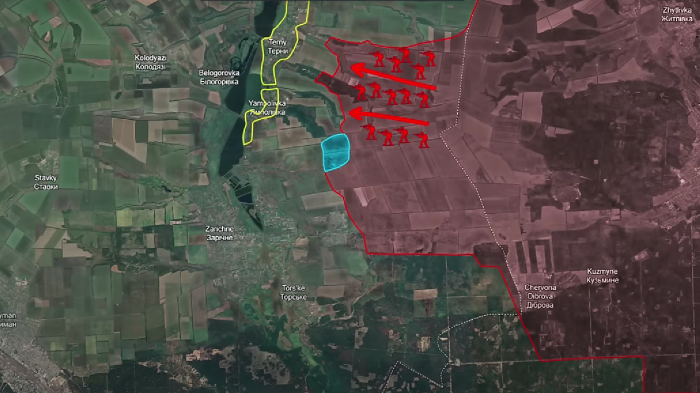
Their plan consisted of two parts. First, they would conduct large infantry attacks toward Terny and Yampolivka. Russian commanders hoped that a series of powerful attacks would divert the attention of the Ukrainian defenders toward the north. Hereafter, Russians would execute a powerful mechanized assault aimed at quickly breaking through the distracted Ukrainian defenders and establishing a foothold in Torske.
If the Russian assault on Torske succeeds, the Russians would cut off a major supply line to Ukrainians in the north and split the Ukrainian defenses in two. While such a breakthrough would be a severe blow to the Ukrainian defense, it would not mean the collapse of the bridgehead. Ukrainians still control numerous other crossing points over the river, with which to reinforce and supply their positions in the north.
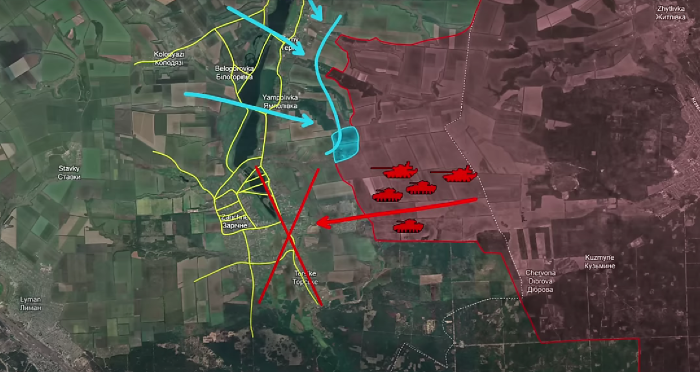
With the Russian reorganization complete and a new course of action established, Russian forces resumed their offensive operation. A Ukrainian military blogger reported that Russians were launching numerous assaults towards Terny and Yampolivka. Russians were using armored transport vehicles to deliver infantry assault groups to the forests in front of the settlements before quickly pulling back before Ukrainians had the time to destroy them. The assault groups then continued their attacks on foot, assaulting Ukrainian positions from all sides.
Ukrainian soldiers active in the area reported that the fighting here was intense and that they had inflicted high casualties on Russian forces. The soldiers stated that Russian forces could capture two positions during these heavy clashes but that the Russian assault was a failure, as they had destroyed numerous Russian assault groups.
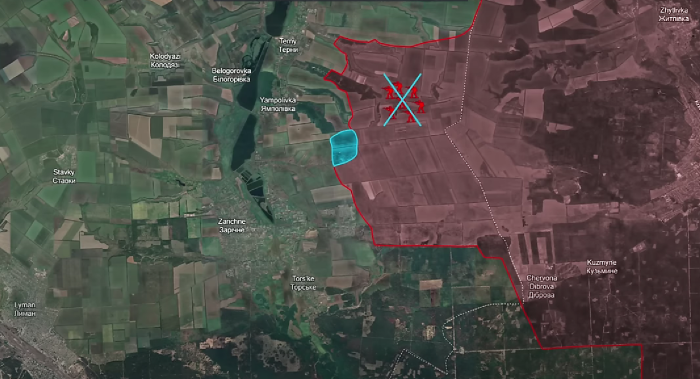
Ukrainian drone operators then released geolocated footage showing how they were attacking Russian infantry in the forests and tree lines with drone-dropped grenades. The drone operators stated that their main goal was to inflict maximum losses on the enemy and to leave the Ukrainian infantry as little work to do as possible.
After these assaults, Russians launched a series of mechanized assaults in the direction of Torske, with a total of 10 armored vehicles and a high amount of infantry. The first assault was launched early in the morning and consisted of 3 armored personnel carriers and two tanks. Already on the approach, the Russian assault group came under heavy fire from Ukrainian artillery crews.
When the Russian assault group reached an opening between the tree lines, it became apparent that Ukrainians had mined this chokepoint with anti-tank mines, creating a kill zone.
In the first assault, Russian armored vehicles were able to pass over these mines with mine rollers but were destroyed in the fields by Ukrainian artillery. Later, assault groups got stuck in this chokepoint, as Ukrainians managed to destroy a Russian vehicle here with artillery, blocking the path for those behind it. The footage then shows how the rest of the Russian armored vehicles came under a massive artillery barrage, even leading some vehicles to attempt to cross the mines to no avail. Russian infantry that had dismounted started to flee as they were too far removed from Ukrainian lines to continue their attack and were destroyed by Ukrainian cluster munitions. Ukrainian fighters in the area reported that all Russian armored vehicles were equipped with electronic warfare systems meant to combat the Ukrainian drone capabilities.
Ukrainians have been receiving many artillery shells, with which they could destroy the Russian mechanized assault. Additionally, the President of Ukraine, Volodymyr Zelenskyy, recently stated that for the first time during the war, no Ukrainian brigades reported a lack of artillery shells.
The arrival of US military aid has the prospect of turning into a new phase in the war. With a sufficient supply of artillery shells, Ukrainians will no longer be overly dependent on drones. While Ukrainian drones have proven themselves to be highly effective in this war, they are unable to completely replace an extensive artillery barrage, as seen with this recent failed Russian assault.
Similarly, Russians have focused their tactics on combating Ukrainian drone capabilities with developments such as widespread electronic warfare systems and the famed turtle tanks. These new Russian tactics are reasonably effective against Ukrainian drones but stand no chance against a well-placed artillery shell.
It is important to note that before the six-month hold-up in military aid, Ukrainians were winning the counterbattery war. Geolocated satellite footage shows that Russian stockpiles of artillery guns were draining quickly. The newly arrived military aid will allow Ukrainians to intensify their counterbattery fire and deal heavy blows to Russian artillery capabilities.
Overall, the two-pronged Russian operation to break through Ukrainian lines and dismantle the Ukrainian bridgehead failed. In the north, Ukrainians managed to hold the Russians at bay, demolishing the newly captured Russian positions with drone-dropped grenades and returning them to the gray zone.
In the south, Russians counted on their electronic warfare capabilities to bypass Ukrainian drones but were met by an overwhelming artillery barrage, as Ukrainians no longer suffered from a shortage of artillery shells.
An increase in artillery capabilities will allow Ukrainians to better combat Russian offensive operations and help usher in a new phase in the war, with the combined firepower of Ukrainian artillery and drones.
In our daily frontline report, we pair up with the military blogger Reporting from Ukraine to keep you informed about what is happening on the battlefield in the Russo-Ukrainian war.
Read also:

